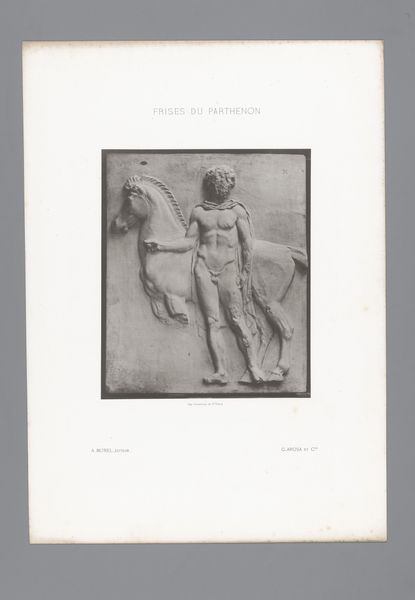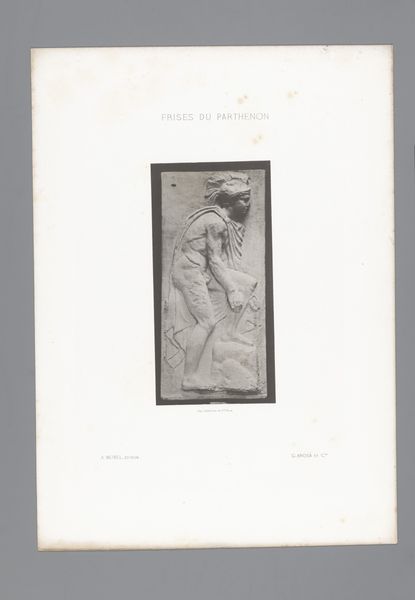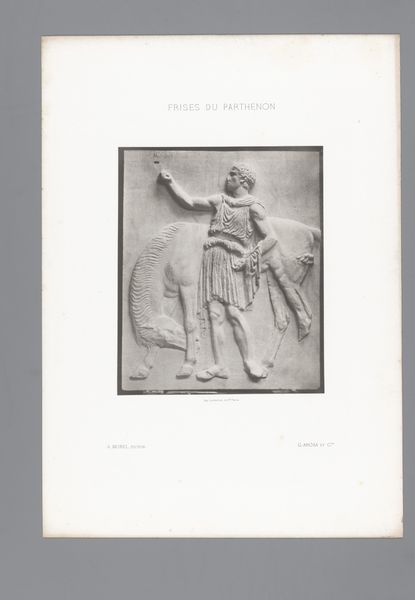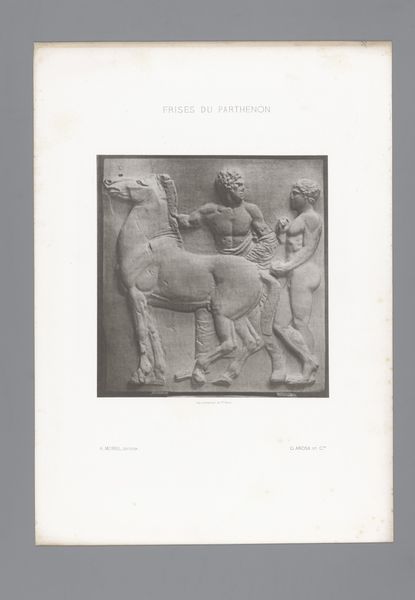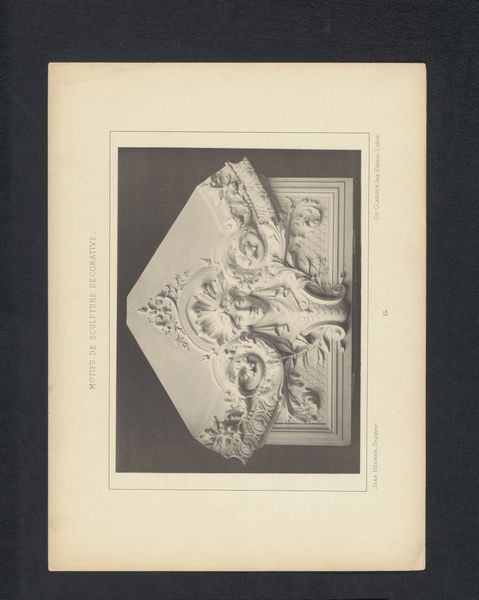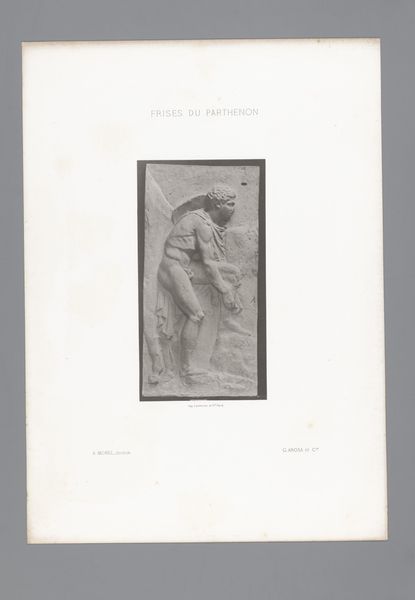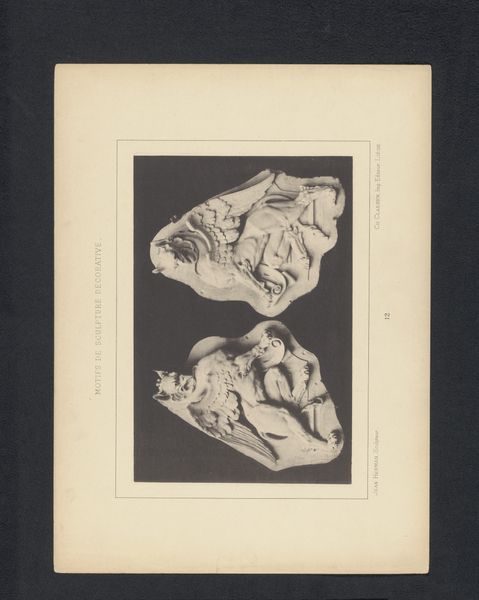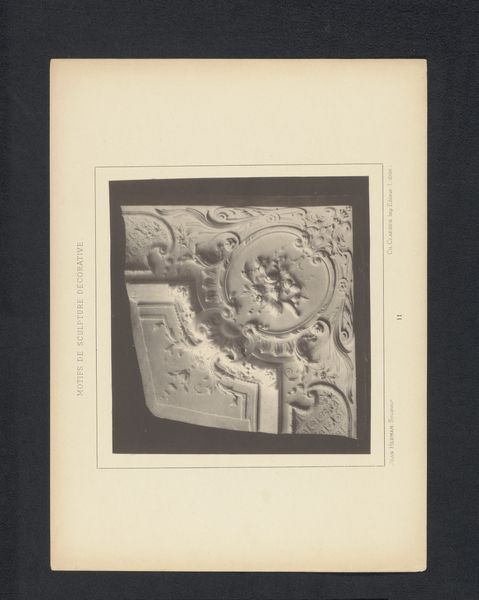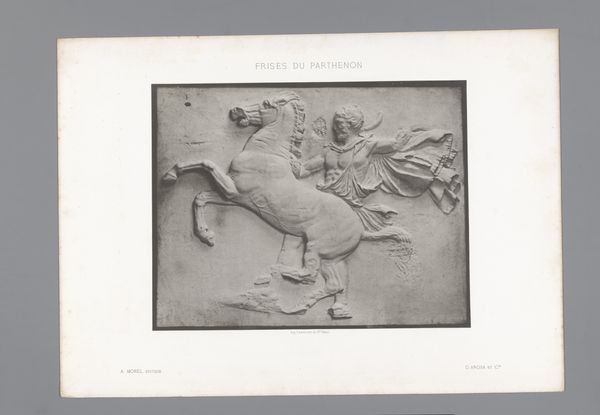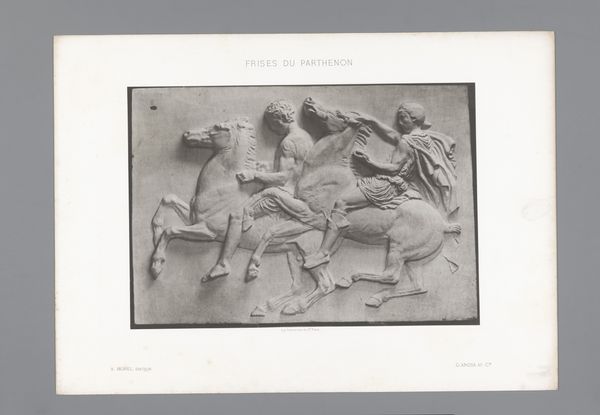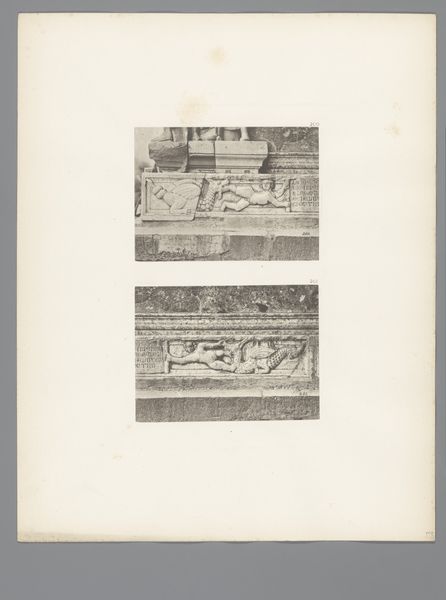
print, relief, photography
# print
#
greek-and-roman-art
#
relief
#
landscape
#
figuration
#
photography
#
ancient-mediterranean
#
history-painting
Dimensions: height 242 mm, width 229 mm
Copyright: Rijks Museum: Open Domain
This image by G. Arosa et Cie, shows a section of the Parthenon frieze, depicting a horse and rider. The original frieze was made from Pentelic marble, a fine-grained, luminous stone prized for its workability. The process would have begun in the quarry, where laborers extracted massive blocks. These were then transported to Athens, where teams of skilled carvers would have used chisels, mallets, and other tools to create the intricate sculptural reliefs. The frieze would have been an integral part of the Parthenon, a symbol of Athenian power and artistic achievement. We see here the importance of skilled labor in the creation of cultural monuments and the social context of this labor. The labor of quarrymen and carvers, often overlooked, was essential to the creation of the artwork. Paying attention to these materials and processes allows us to see a wider understanding of classical artwork, blurring the lines between craft and fine art.
Comments
No comments
Be the first to comment and join the conversation on the ultimate creative platform.

